19 January 2024
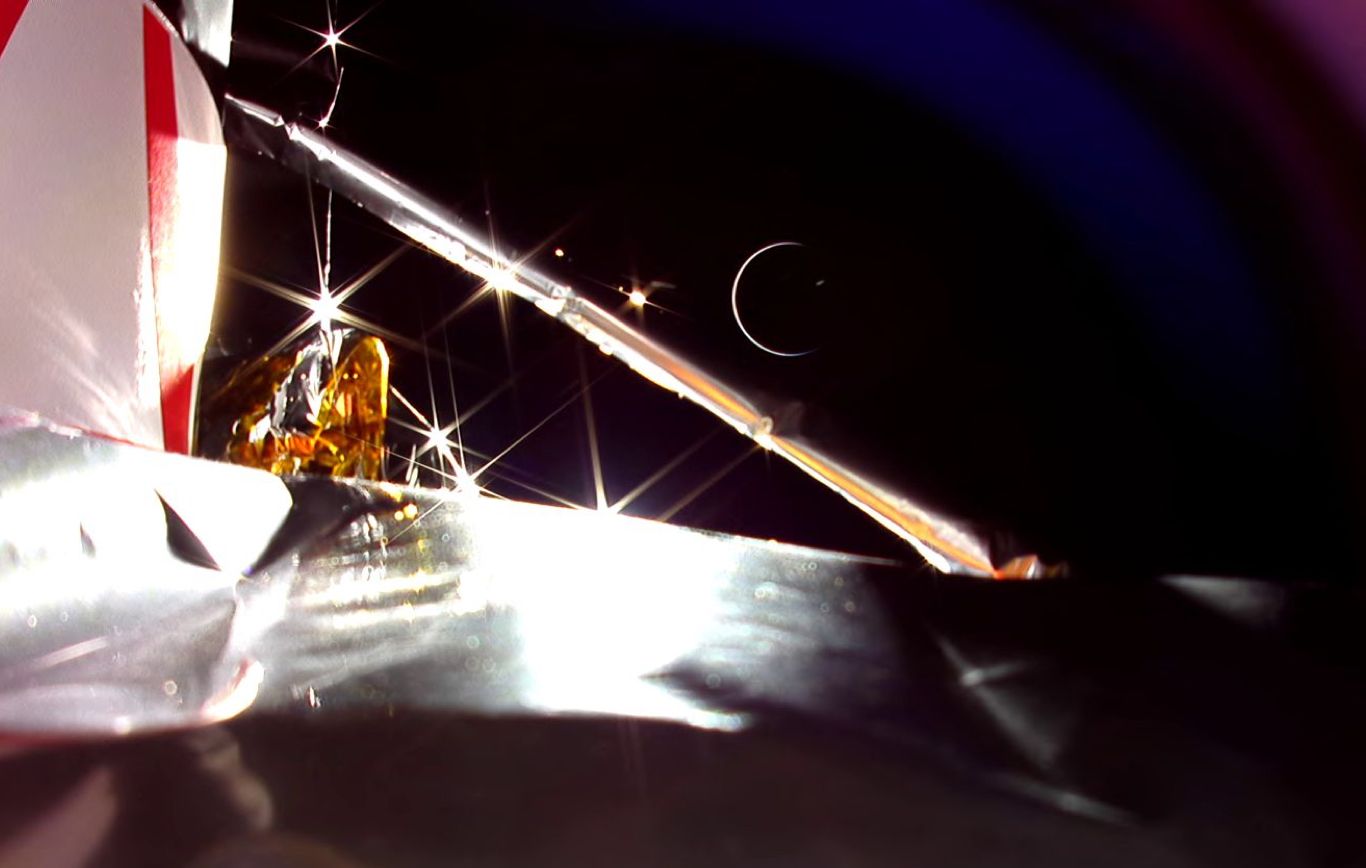
Crescent Earth image taken from Astrobotic lander (Image - Astrobotic)
Astrobotic’s mission one came to and end on Thursday, as the spacecraft performed a controlled reentry to Earth over the Pacific, burning up in the atmosphere, with any remaining debris falling outside of any populated areas. While not successfully landing on the Moon, the mission is still seen as a success, in travelling the required distance which would have been needed to land on the Moon, and also powering-up several of its payloads.
Moreover, the team will have been able to collect valuable data and use the mission as a critical opportunity to learn and iterate on its next attempt later this year (planned for the fourth quarter).
In what has started out to be a busy year for expansion of the lunar economy, Japan successfully completed their first lunar landing mission on Friday, with the soft landing of their SLIM lander, becoming only the fifth nation to land on the Moon.
SLIM (Smart Lander for Investigating Moon) was designed to test pinpoint landing technology, allowing it land within only 100m of its specified target, where it can continue to carry out its mission goals. Firstly, it will analyse the its surroundings (the Shioli crater) using a Multi-Band Camera (MBC).
Additionally, it will release two small rovers, Lunar Excursion Vehicle 1 & 2 (LEV). LEV-1 uses a hopping mechanism to traverse the lunar surface, while LEV-2 is a small, spherical rover. Both are equipped with cameras and other scientific payloads. The overall mission is set to last one lunar day, after which the cold of the lunar night is expected to render the vehicles redundant.
As of writing, JAXA are experiencing problems with the solar cells, meaning that the vehicle is running only off battery power. Nonetheless, Japan have now entered the lunar club.
Both missions have set the stage for 2024, a year which will be looked back upon as a curtain-raising moment for the new lunar economy. Agency missions from both Japan and China prove that lunar exploration is a key element to national space strategy, but missions from Astrobotic, Intuitive Machines and Firefly are the real indicators of the new age we are entering for the Moon; the commercial age.
Blue Origin, UK Space Agency development for lunar infrastructure
With an increasing launch cadence for lunar missions this year also comes a growing interest in the development of the lunar infrastructure, particularly through in-situ resource utilisation (ISRU) for sourcing water and generating power.
Last year the US Defense Advanced Research Projects Agency (DARPA) selected 14 companies under their plans for the LuNa-10 programme, a study aimed at forwarding the development of a “a self-sustaining, monetizable, commercially owned-and-operated lunar infrastructure” (DARPA's Strategic Technology Office).
PowerLight Technologies (US) have now joined a team with Blue Origin, funded by the DARPA LuNa-10 programme, in an effort to develop power-beaming technology for the Moon. Additionally, the project may also use solar cells that are manufactured in-situ, which will generate the power which will be beamed through laser transmission.
Blue Origin have been developing in-situ solar cell production using simulated lunar regolith since 2021, in its programme named “Blue Alchemist”.
Similarly, the UK and Canada have announced they will be joining forces in the pursuit of utilising resources on the Moon; namely water. The Aqualunar Challenge is “rewarding the design of innovative technologies to make human habitation on the Moon viable by finding ways to purify water buried beneath the lunar surface”, according to a statement from the UK government.
Utilising water is of course a crucial step towards an ongoing human presence on the Moon, needed for sourcing drinking water and producing oxygen, as well a manufacturing rocket fuel.

(Image - Adobe)
US DoD call for lunar investment in race with China
With interest in long-term lunar exploration growing, and the expanding presence of commercial entities, comes the awareness that lunar resources and territory, while untapped, are finite. This is perhaps summed-up in no better way the heightening US-China lunar race.
In December last year, the US oversight and investigation subcommittee of the House Natural Resources Committee discussed lunar mining and securing resources, with the race against China being presented in utmost importance by some. Michele Hanlon, executive director of the University of Mississippi’s Center for Air and Space Law, went as far as to mention a loophole in international law which would give the US a means of securing resources on the Moon, through the use of exclusion zones.
Despite territorial appropriation being forbidden the UN Outer Space Treaty (1967), an exclusion zone could be declared in the area around a lading site, for safety purposes. This concept would then in actuality restrict any adversary from entering that zone, and thus reserve the resources within it.
This mentality was again reiterated this week in a report from the Mitchel Institute for Aerospace Studies. It calls for closer collaboration between the US military and NASA in the development of infrastructure in cislunar space (the area between Earth and the orbit of the Moon). Moreover, it highlights the urgency for more investment in the wake of growing Chinese lunar ambitions.
Charles Galbreath, senior fellow for space studies at the Mitchell Institute, spoke of the need for modest, early investment, in order to “accelerate U.S. efforts and reduce the future need for larger investments to overcome a Chinese advantage.”
A race of sorts is already underway this year, with the first US attempt failing to land on the Moon (Astrobotic), and China set to launch their Chang’e-6 mission in the first half of this year to the far side of the Moon. The US do still have another opportunity in the form of the Intuitive Machines debut lunar mission, set to launch in mid-February.
One thing may be for sure; with a growing race mentality comes increasing competition, which in turn drives the pace of technology design, efficiency and innovation. With this in mind, we now may need to understand that the development of the lunar economy and infrastructure may come much sooner than we thought.
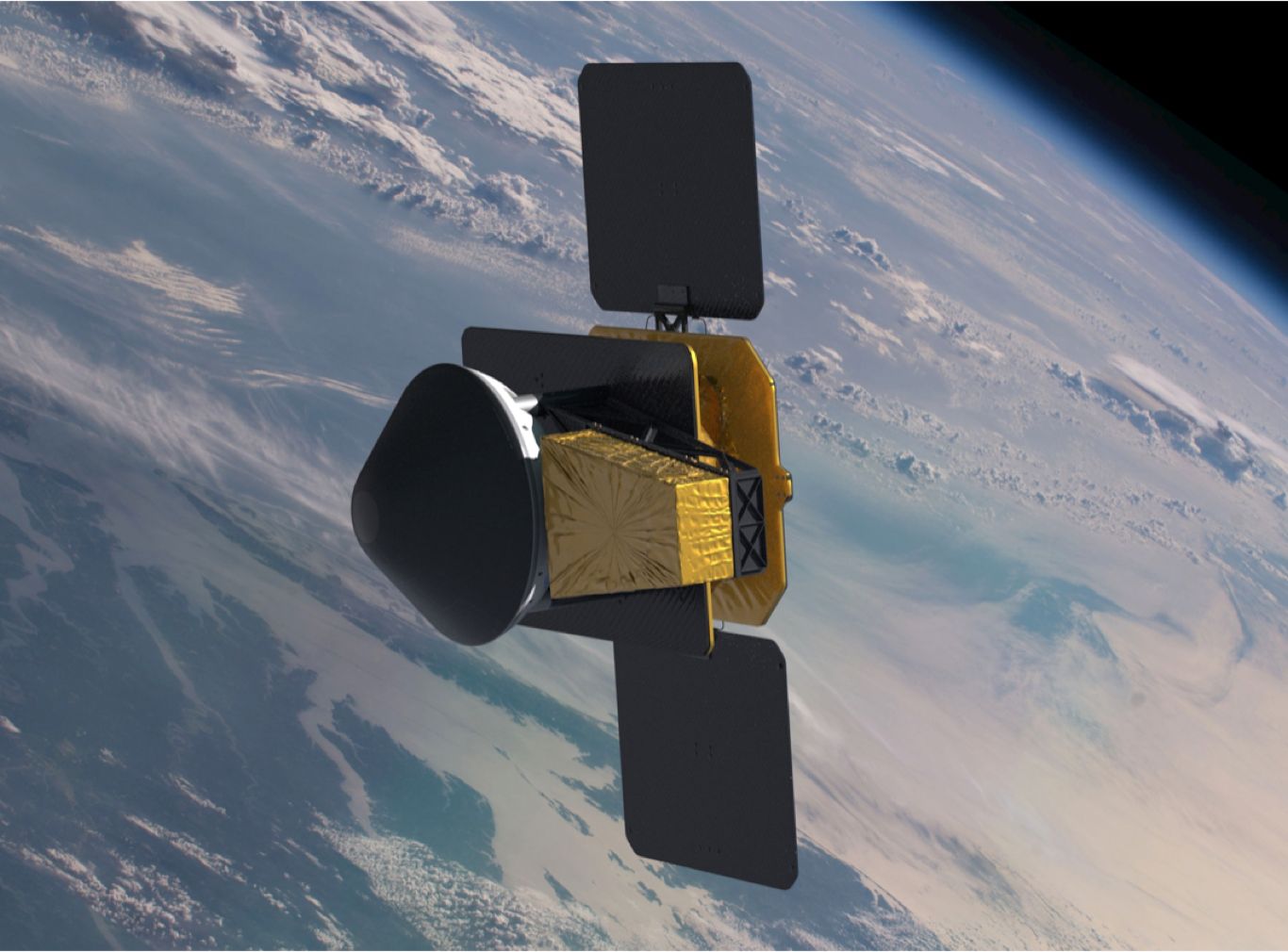
Varda's W-1 manufacturing satellite part of ISM growth (Image - Varda)
Fourth quarter startup funding provides positive outlook, fuelled by emerging tech
Last year presented challenges for the space industry overall, with Space Capital this week reporting that private companies raised $17.9 billion in 2023, down 25% from 2022. Growing interest rates, rising geopolitical tensions and low-return on space investments may be attributed this. But fortunately the outlook hasn’t remained as gloomy.
In fact there was much to celebrate about investment in 2023. In February last year, VC firm Seraphim Space projected their optimism about the space sector, with a keen eye on the in-space economy through industries such as space infrastructure, in-space manufacturing (ISM) and lunar technologies. Indeed the Space Capital report reflected this as well, noting that despite the overall drop, investments in emerging industries, such as ISM, rose 250% to $2 billion.
The report went on to suggest the the fourth quarter of last year may have seen a turning point, particularly for startups, with global investment climbing 31%. Speaking in regards to this, Seraphim Space said that "Despite a relatively slow start to the year, 2023 investment ultimately was in line with 2022. If the quarterly trajectory continues, 2024 should be a healthy year for investment in space.”
In addition to this, we rounded-off last year with a buoyant report from CoherentMI, which anticipated the global space economy to be worth over $1 trillion by 2030; a forecast some other major analysts didn’t expect to see until 2040.
It may be the case that some industries felt the brunt of declining investments last year, and we saw some notable casualties, such as Virgin Orbit. However, as the New Space industrial revolution unfolds, it seemingly is, in part, the actions of emerging industries, startups and new space entities driving growth.
Our future in space
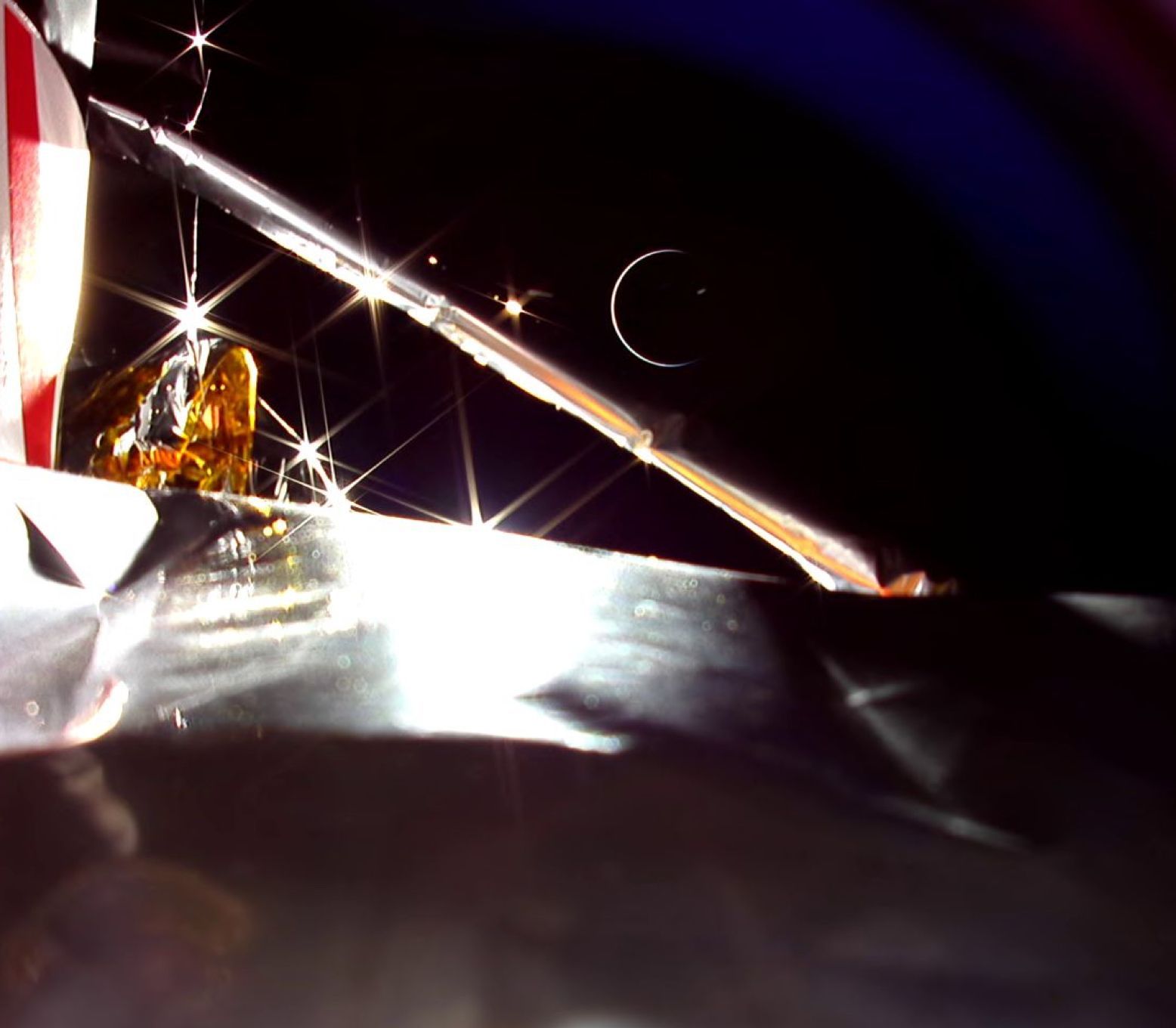
Crescent Earth image taken from Astrobotic lander (Image - Astrobotic)
19 January 2024
Astrobotic Mission Ends, Japan Enters Lunar Club, Report Finds US DoD Should Seek Funds to Outpace China in Lunar Race - Space News Roundup
Astrobotic’s mission one came to and end on Thursday, as the spacecraft performed a controlled reentry to Earth over the Pacific, burning up in the atmosphere, with any remaining debris falling outside of any populated areas. While not successfully landing on the Moon, the mission is still seen as a success, in travelling the required distance which would have been needed to land on the Moon, and also powering-up several of its payloads.
Moreover, the team will have been able to collect valuable data and use the mission as a critical opportunity to learn and iterate on its next attempt later this year (planned for the fourth quarter).
In what has started out to be a busy year for expansion of the lunar economy, Japan successfully completed their first lunar landing mission on Friday, with the soft landing of their SLIM lander, becoming only the fifth nation to land on the Moon.
SLIM (Smart Lander for Investigating Moon) was designed to test pinpoint landing technology, allowing it land within only 100m of its specified target, where it can continue to carry out its mission goals. Firstly, it will analyse the its surroundings (the Shioli crater) using a Multi-Band Camera (MBC).
Additionally, it will release two small rovers, Lunar Excursion Vehicle 1 & 2 (LEV). LEV-1 uses a hopping mechanism to traverse the lunar surface, while LEV-2 is a small, spherical rover. Both are equipped with cameras and other scientific payloads. The overall mission is set to last one lunar day, after which the cold of the lunar night is expected to render the vehicles redundant.
As of writing, JAXA are experiencing problems with the solar cells, meaning that the vehicle is running only off battery power. Nonetheless, Japan have now entered the lunar club.
Both missions have set the stage for 2024, a year which will be looked back upon as a curtain-raising moment for the new lunar economy. Agency missions from both Japan and China prove that lunar exploration is a key element to national space strategy, but missions from Astrobotic, Intuitive Machines and Firefly are the real indicators of the new age we are entering for the Moon; the commercial age.
Blue Origin, UK Space Agency development for lunar infrastructure
With an increasing launch cadence for lunar missions this year also comes a growing interest in the development of the lunar infrastructure, particularly through in-situ resource utilisation (ISRU) for sourcing water and generating power.
Last year the US Defense Advanced Research Projects Agency (DARPA) selected 14 companies under their plans for the LuNa-10 programme, a study aimed at forwarding the development of a “a self-sustaining, monetizable, commercially owned-and-operated lunar infrastructure” (DARPA's Strategic Technology Office).
PowerLight Technologies (US) have now joined a team with Blue Origin, funded by the DARPA LuNa-10 programme, in an effort to develop power-beaming technology for the Moon. Additionally, the project may also use solar cells that are manufactured in-situ, which will generate the power which will be beamed through laser transmission.
Blue Origin have been developing in-situ solar cell production using simulated lunar regolith since 2021, in its programme named “Blue Alchemist”.
Similarly, the UK and Canada have announced they will be joining forces in the pursuit of utilising resources on the Moon; namely water. The Aqualunar Challenge is “rewarding the design of innovative technologies to make human habitation on the Moon viable by finding ways to purify water buried beneath the lunar surface”, according to a statement from the UK government.
Utilising water is of course a crucial step towards an ongoing human presence on the Moon, needed for sourcing drinking water and producing oxygen, as well a manufacturing rocket fuel.
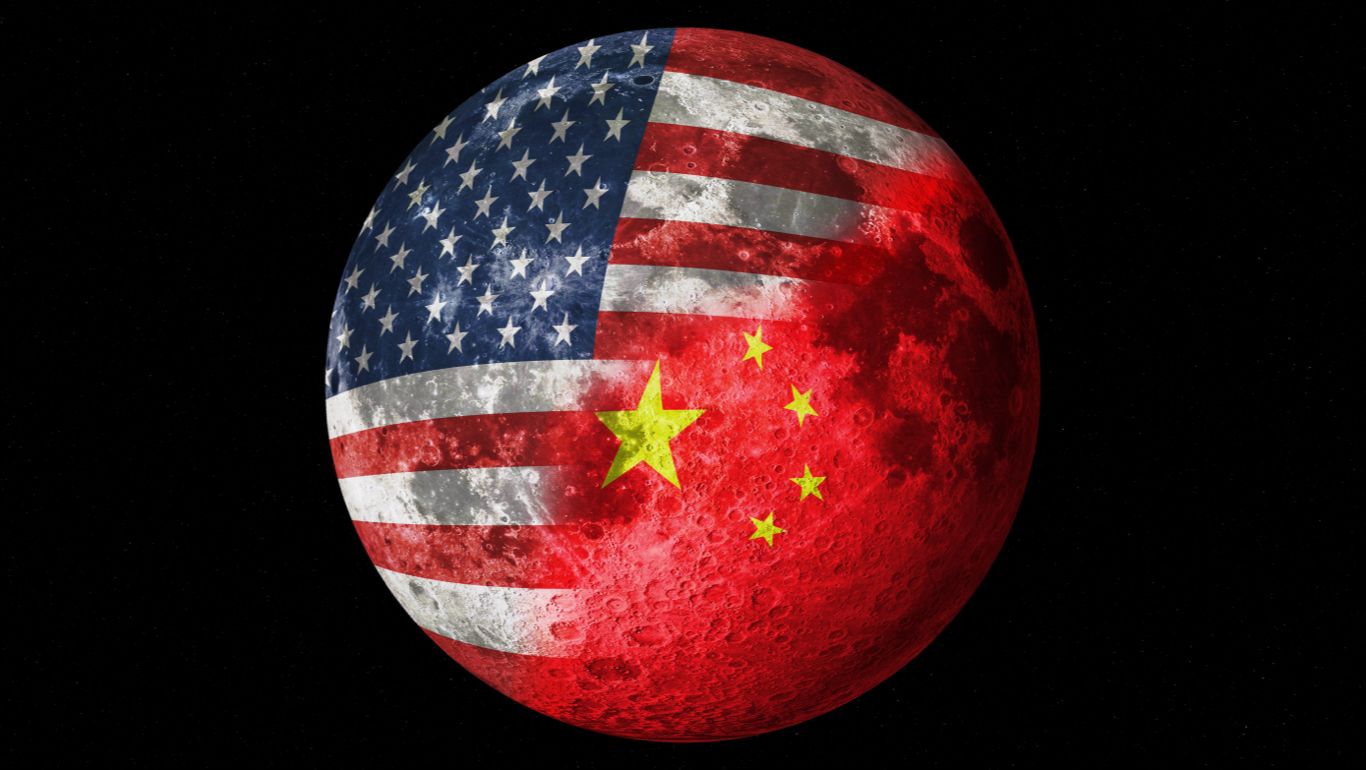
(Image - Adobe)
US DoD call for lunar investment in race with China
With interest in long-term lunar exploration growing, and the expanding presence of commercial entities, comes the awareness that lunar resources and territory, while untapped, are finite. This is perhaps summed-up in no better way the heightening US-China lunar race.
In December last year, the US oversight and investigation subcommittee of the House Natural Resources Committee discussed lunar mining and securing resources, with the race against China being presented in utmost importance by some. Michele Hanlon, executive director of the University of Mississippi’s Center for Air and Space Law, went as far as to mention a loophole in international law which would give the US a means of securing resources on the Moon, through the use of exclusion zones.
Despite territorial appropriation being forbidden the UN Outer Space Treaty (1967), an exclusion zone could be declared in the area around a lading site, for safety purposes. This concept would then in actuality restrict any adversary from entering that zone, and thus reserve the resources within it.
This mentality was again reiterated this week in a report from the Mitchel Institute for Aerospace Studies. It calls for closer collaboration between the US military and NASA in the development of infrastructure in cislunar space (the area between Earth and the orbit of the Moon). Moreover, it highlights the urgency for more investment in the wake of growing Chinese lunar ambitions.
Charles Galbreath, senior fellow for space studies at the Mitchell Institute, spoke of the need for modest, early investment, in order to “accelerate U.S. efforts and reduce the future need for larger investments to overcome a Chinese advantage.”
A race of sorts is already underway this year, with the first US attempt failing to land on the Moon (Astrobotic), and China set to launch their Chang’e-6 mission in the first half of this year to the far side of the Moon. The US do still have another opportunity in the form of the Intuitive Machines debut lunar mission, set to launch in mid-February.
One thing may be for sure; with a growing race mentality comes increasing competition, which in turn drives the pace of technology design, efficiency and innovation. With this in mind, we now may need to understand that the development of the lunar economy and infrastructure may come much sooner than we thought.
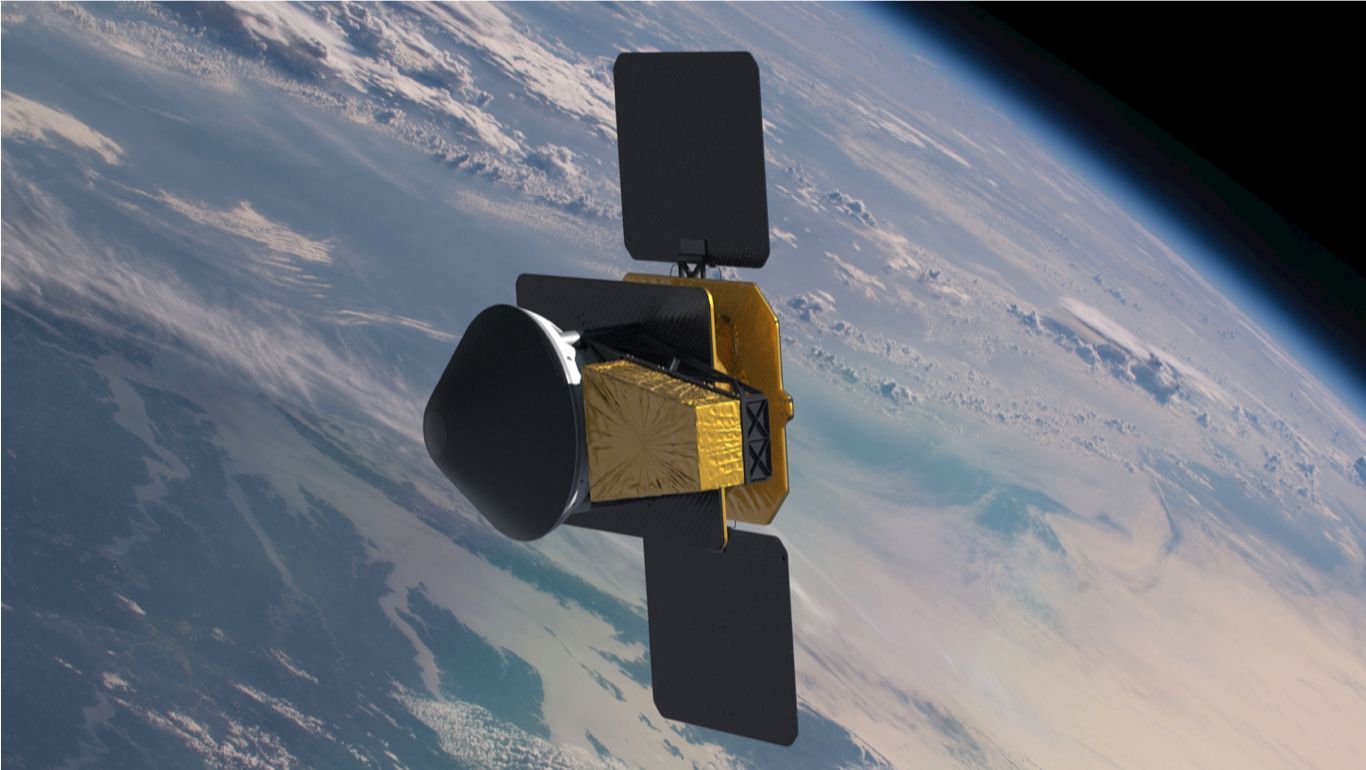
Varda's W-1 manufacturing satellite part of ISM growth (Image - Varda)
Fourth quarter startup funding provides positive outlook, fuelled by emerging tech
Last year presented challenges for the space industry overall, with Space Capital this week reporting that private companies raised $17.9 billion in 2023, down 25% from 2022. Growing interest rates, rising geopolitical tensions and low-return on space investments may be attributed this. But fortunately the outlook hasn’t remained as gloomy.
In fact there was much to celebrate about investment in 2023. In February last year, VC firm Seraphim Space projected their optimism about the space sector, with a keen eye on the in-space economy through industries such as space infrastructure, in-space manufacturing (ISM) and lunar technologies. Indeed the Space Capital report reflected this as well, noting that despite the overall drop, investments in emerging industries, such as ISM, rose 250% to $2 billion.
The report went on to suggest the the fourth quarter of last year may have seen a turning point, particularly for startups, with global investment climbing 31%. Speaking in regards to this, Seraphim Space said that "Despite a relatively slow start to the year, 2023 investment ultimately was in line with 2022. If the quarterly trajectory continues, 2024 should be a healthy year for investment in space.”
In addition to this, we rounded-off last year with a buoyant report from CoherentMI, which anticipated the global space economy to be worth over $1 trillion by 2030; a forecast some other major analysts didn’t expect to see until 2040.
It may be the case that some industries felt the brunt of declining investments last year, and we saw some notable casualties, such as Virgin Orbit. However, as the New Space industrial revolution unfolds, it seemingly is, in part, the actions of emerging industries, startups and new space entities driving growth.
Share this article
19 January 2024
Astrobotic Mission Ends, Japan Enters Lunar Club, Report Finds US DoD Should Seek Funds to Outpace China in Lunar Race - Space News Roundup
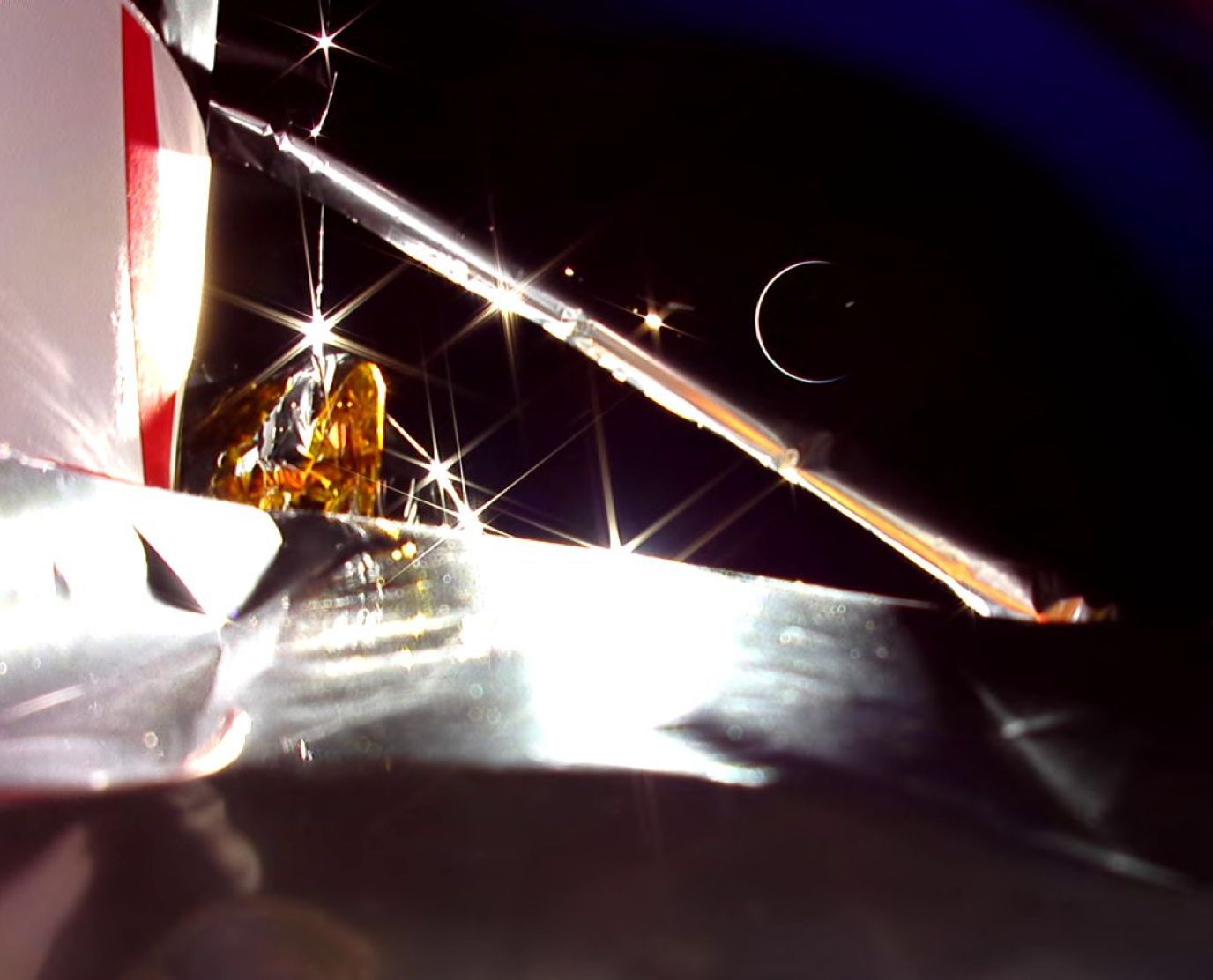
Crescent Earth image taken from Astrobotic lander (Image - Astrobotic)
Astrobotic’s mission one came to and end on Thursday, as the spacecraft performed a controlled reentry to Earth over the Pacific, burning up in the atmosphere, with any remaining debris falling outside of any populated areas. While not successfully landing on the Moon, the mission is still seen as a success, in travelling the required distance which would have been needed to land on the Moon, and also powering-up several of its payloads.
Moreover, the team will have been able to collect valuable data and use the mission as a critical opportunity to learn and iterate on its next attempt later this year (planned for the fourth quarter).
In what has started out to be a busy year for expansion of the lunar economy, Japan successfully completed their first lunar landing mission on Friday, with the soft landing of their SLIM lander, becoming only the fifth nation to land on the Moon.
SLIM (Smart Lander for Investigating Moon) was designed to test pinpoint landing technology, allowing it land within only 100m of its specified target, where it can continue to carry out its mission goals. Firstly, it will analyse the its surroundings (the Shioli crater) using a Multi-Band Camera (MBC).
Additionally, it will release two small rovers, Lunar Excursion Vehicle 1 & 2 (LEV). LEV-1 uses a hopping mechanism to traverse the lunar surface, while LEV-2 is a small, spherical rover. Both are equipped with cameras and other scientific payloads. The overall mission is set to last one lunar day, after which the cold of the lunar night is expected to render the vehicles redundant.
As of writing, JAXA are experiencing problems with the solar cells, meaning that the vehicle is running only off battery power. Nonetheless, Japan have now entered the lunar club.
Both missions have set the stage for 2024, a year which will be looked back upon as a curtain-raising moment for the new lunar economy. Agency missions from both Japan and China prove that lunar exploration is a key element to national space strategy, but missions from Astrobotic, Intuitive Machines and Firefly are the real indicators of the new age we are entering for the Moon; the commercial age.
Blue Origin, UK Space Agency development for lunar infrastructure
With an increasing launch cadence for lunar missions this year also comes a growing interest in the development of the lunar infrastructure, particularly through in-situ resource utilisation (ISRU) for sourcing water and generating power.
Last year the US Defense Advanced Research Projects Agency (DARPA) selected 14 companies under their plans for the LuNa-10 programme, a study aimed at forwarding the development of a “a self-sustaining, monetizable, commercially owned-and-operated lunar infrastructure” (DARPA's Strategic Technology Office).
PowerLight Technologies (US) have now joined a team with Blue Origin, funded by the DARPA LuNa-10 programme, in an effort to develop power-beaming technology for the Moon. Additionally, the project may also use solar cells that are manufactured in-situ, which will generate the power which will be beamed through laser transmission.
Blue Origin have been developing in-situ solar cell production using simulated lunar regolith since 2021, in its programme named “Blue Alchemist”.
Similarly, the UK and Canada have announced they will be joining forces in the pursuit of utilising resources on the Moon; namely water. The Aqualunar Challenge is “rewarding the design of innovative technologies to make human habitation on the Moon viable by finding ways to purify water buried beneath the lunar surface”, according to a statement from the UK government.
Utilising water is of course a crucial step towards an ongoing human presence on the Moon, needed for sourcing drinking water and producing oxygen, as well a manufacturing rocket fuel.
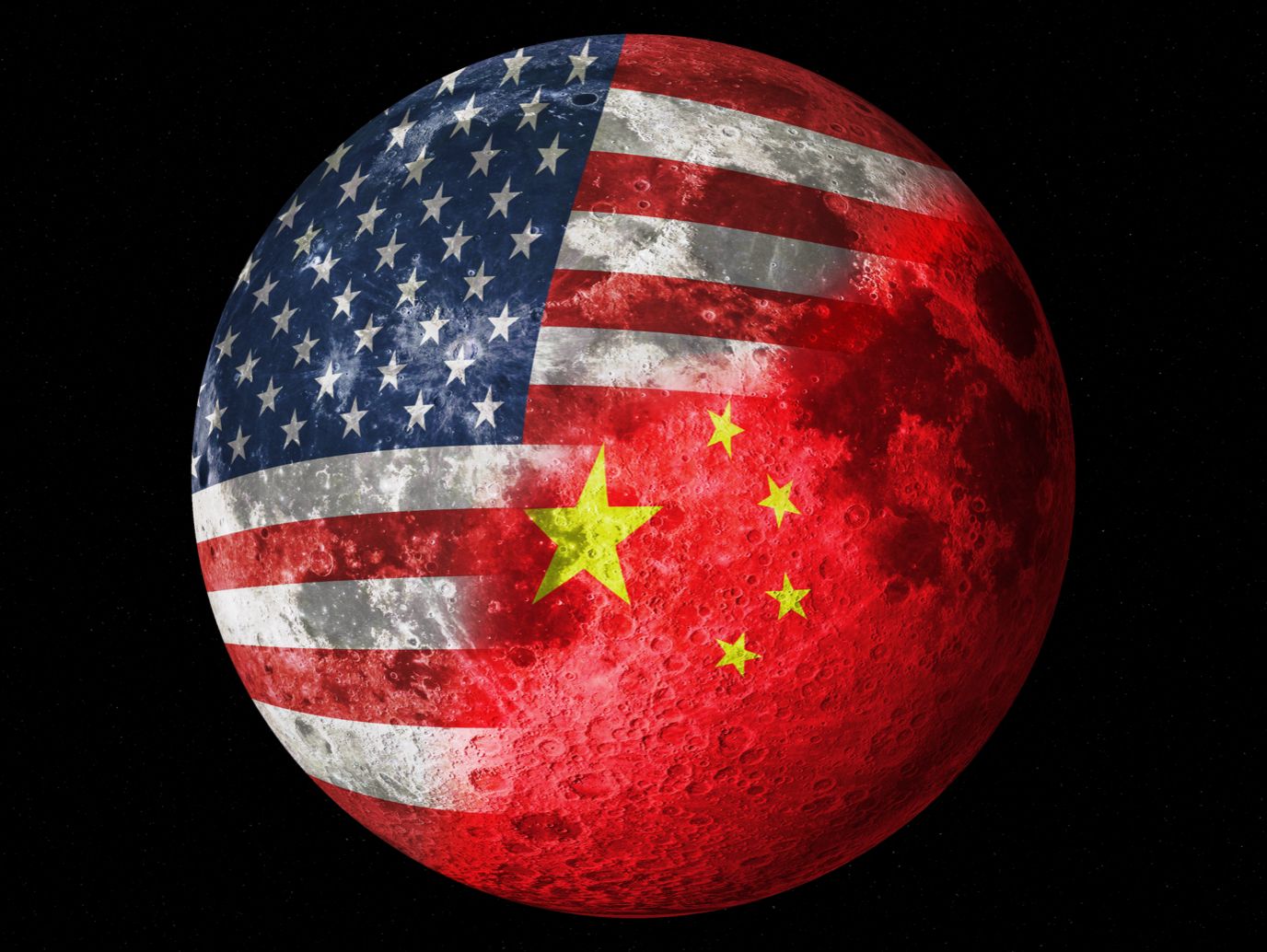
(Image - Adobe)
US DoD call for lunar investment in race with China
With interest in long-term lunar exploration growing, and the expanding presence of commercial entities, comes the awareness that lunar resources and territory, while untapped, are finite. This is perhaps summed-up in no better way the heightening US-China lunar race.
In December last year, the US oversight and investigation subcommittee of the House Natural Resources Committee discussed lunar mining and securing resources, with the race against China being presented in utmost importance by some. Michele Hanlon, executive director of the University of Mississippi’s Center for Air and Space Law, went as far as to mention a loophole in international law which would give the US a means of securing resources on the Moon, through the use of exclusion zones.
Despite territorial appropriation being forbidden the UN Outer Space Treaty (1967), an exclusion zone could be declared in the area around a lading site, for safety purposes. This concept would then in actuality restrict any adversary from entering that zone, and thus reserve the resources within it.
This mentality was again reiterated this week in a report from the Mitchel Institute for Aerospace Studies. It calls for closer collaboration between the US military and NASA in the development of infrastructure in cislunar space (the area between Earth and the orbit of the Moon). Moreover, it highlights the urgency for more investment in the wake of growing Chinese lunar ambitions.
Charles Galbreath, senior fellow for space studies at the Mitchell Institute, spoke of the need for modest, early investment, in order to “accelerate U.S. efforts and reduce the future need for larger investments to overcome a Chinese advantage.”
A race of sorts is already underway this year, with the first US attempt failing to land on the Moon (Astrobotic), and China set to launch their Chang’e-6 mission in the first half of this year to the far side of the Moon. The US do still have another opportunity in the form of the Intuitive Machines debut lunar mission, set to launch in mid-February.
One thing may be for sure; with a growing race mentality comes increasing competition, which in turn drives the pace of technology design, efficiency and innovation. With this in mind, we now may need to understand that the development of the lunar economy and infrastructure may come much sooner than we thought.
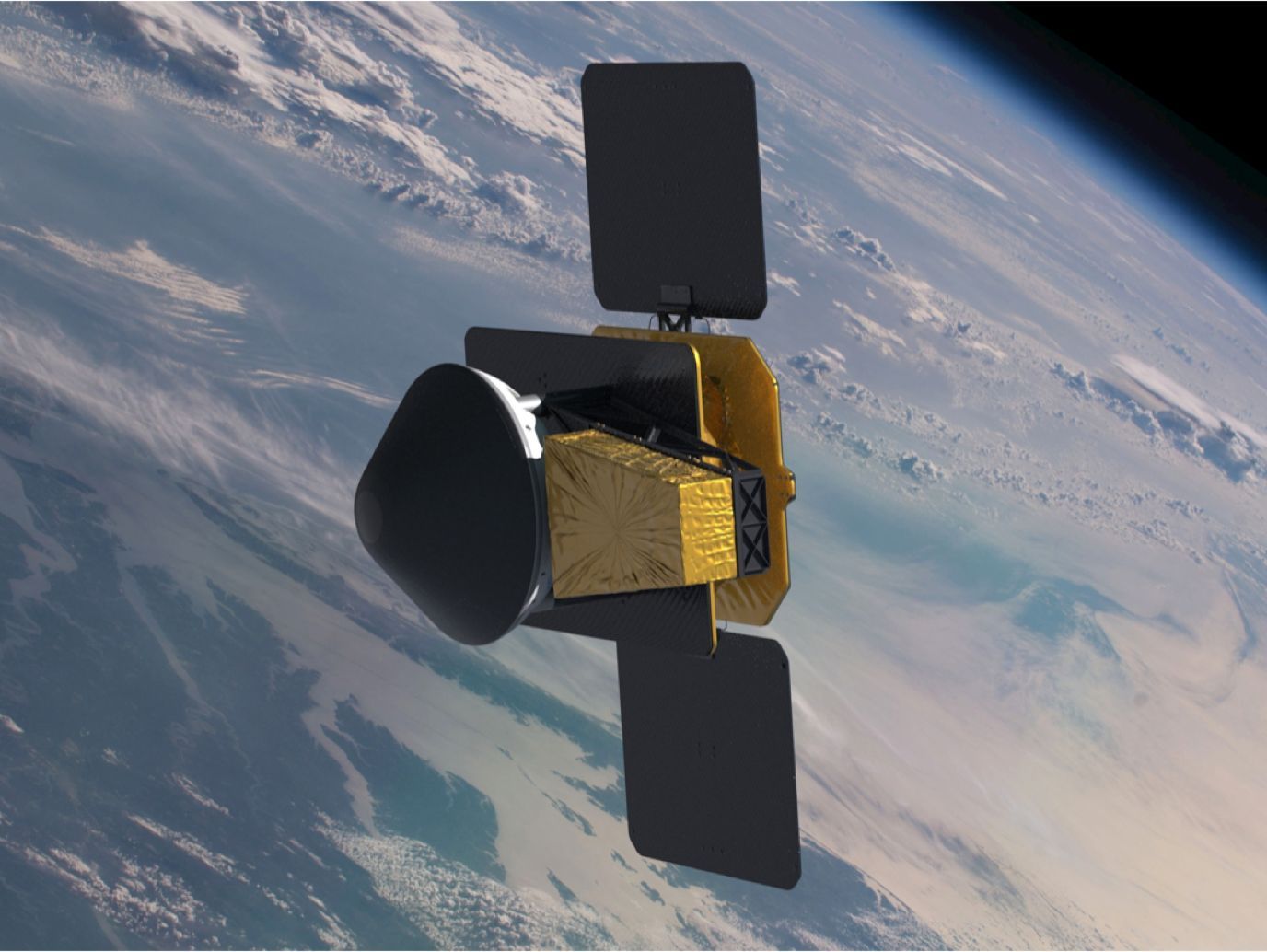
Varda's W-1 manufacturing satellite part of ISM growth (Image - Varda)
Fourth quarter startup funding provides positive outlook, fuelled by emerging tech
Last year presented challenges for the space industry overall, with Space Capital this week reporting that private companies raised $17.9 billion in 2023, down 25% from 2022. Growing interest rates, rising geopolitical tensions and low-return on space investments may be attributed this. But fortunately the outlook hasn’t remained as gloomy.
In fact there was much to celebrate about investment in 2023. In February last year, VC firm Seraphim Space projected their optimism about the space sector, with a keen eye on the in-space economy through industries such as space infrastructure, in-space manufacturing (ISM) and lunar technologies. Indeed the Space Capital report reflected this as well, noting that despite the overall drop, investments in emerging industries, such as ISM, rose 250% to $2 billion.
The report went on to suggest the the fourth quarter of last year may have seen a turning point, particularly for startups, with global investment climbing 31%. Speaking in regards to this, Seraphim Space said that "Despite a relatively slow start to the year, 2023 investment ultimately was in line with 2022. If the quarterly trajectory continues, 2024 should be a healthy year for investment in space.”
In addition to this, we rounded-off last year with a buoyant report from CoherentMI, which anticipated the global space economy to be worth over $1 trillion by 2030; a forecast some other major analysts didn’t expect to see until 2040.
It may be the case that some industries felt the brunt of declining investments last year, and we saw some notable casualties, such as Virgin Orbit. However, as the New Space industrial revolution unfolds, it seemingly is, in part, the actions of emerging industries, startups and new space entities driving growth.
Share this article
External Links
This Week
News articles posted here are not property of ANASDA GmbH and belong to their respected owners. Postings here are external links only.







